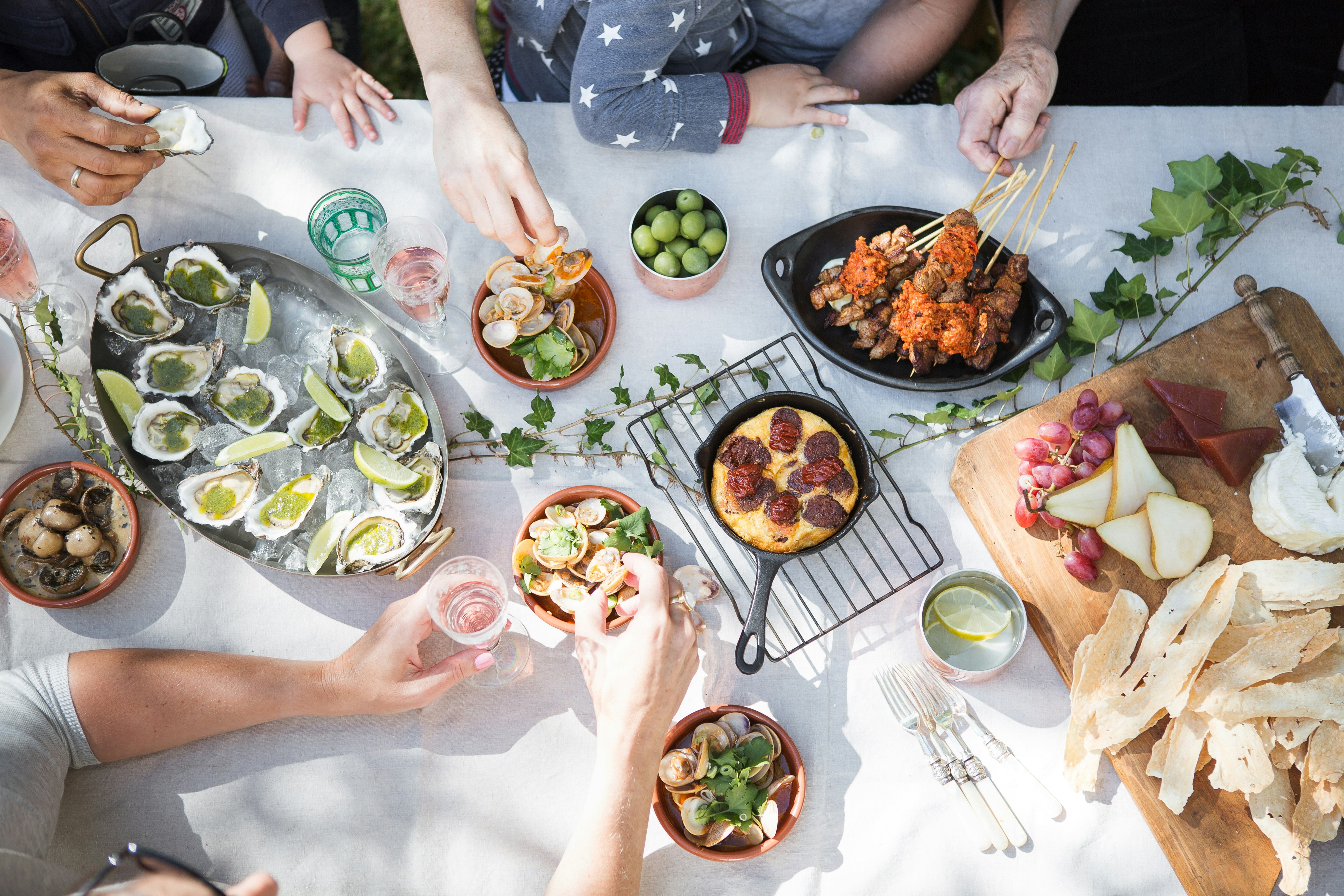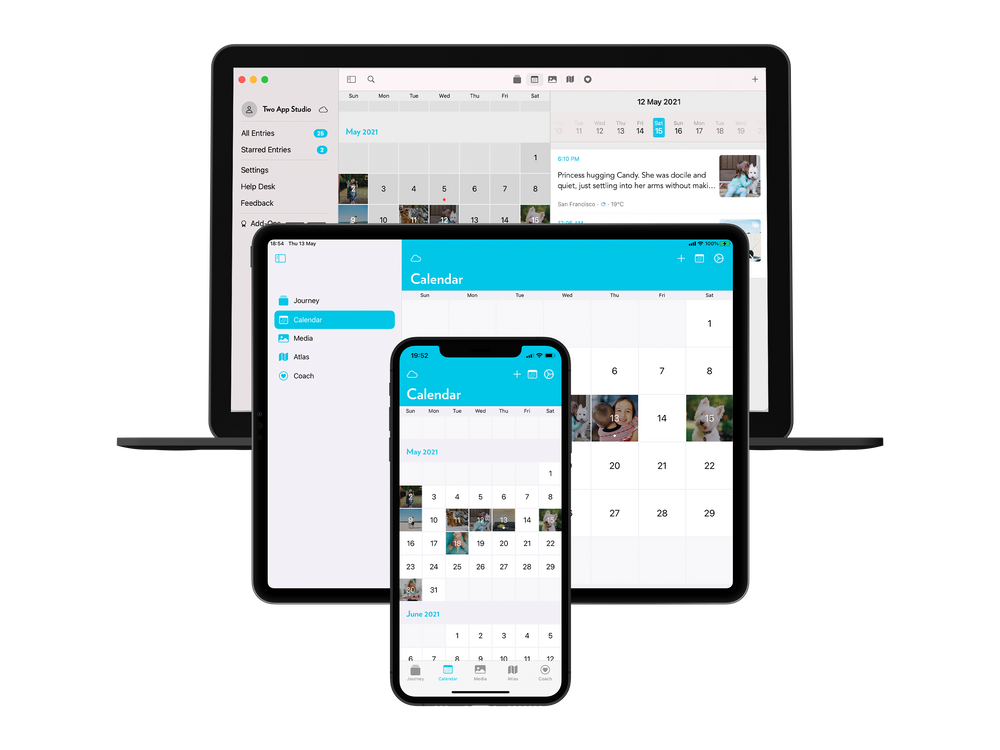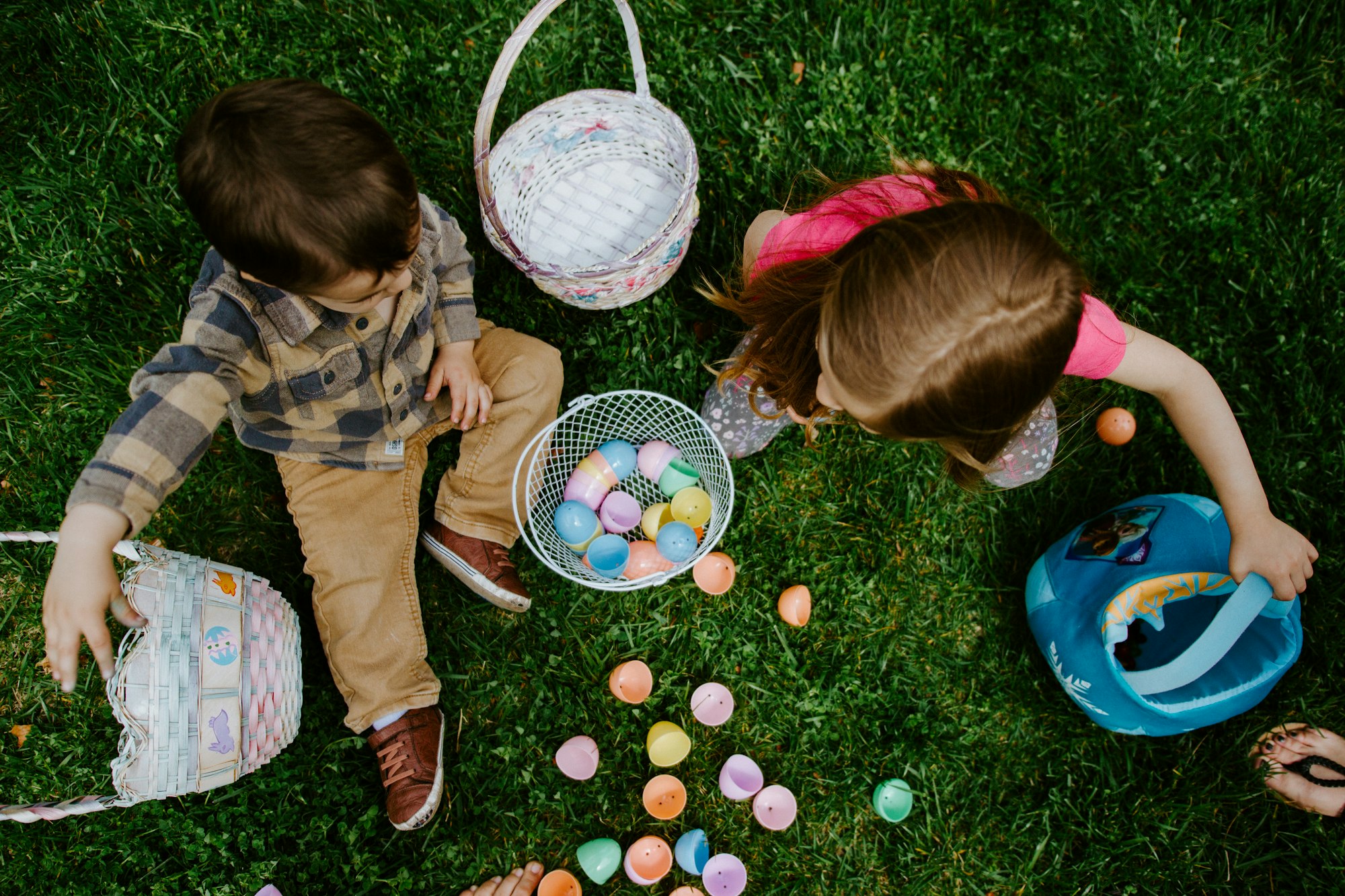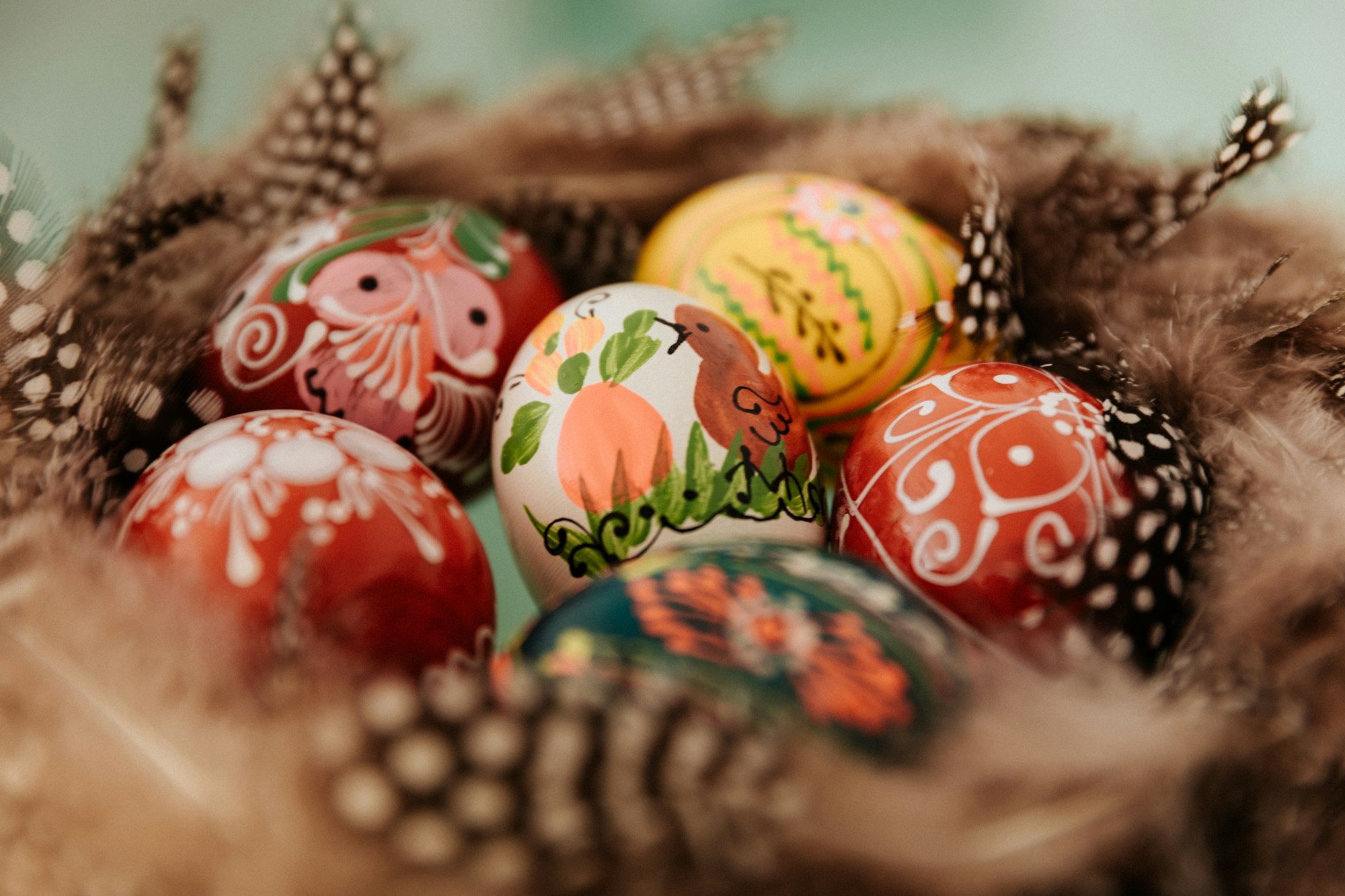Easter celebrations include brunches, family get-togethers, and fun activities like painting eggs and Easter egg hunts. Regardless of your reasons for celebrating Easter, there are many things you can do to commemorate the day with your family and friends.
And with these Easter celebrations and family get-togethers can come some inevitable holiday stress. Whether the stress and fatigue come from the back-to-back socializing and interacting with people, preparing for friends and family to come over, buying gifts, or just being on your toes during the Easter period, making space and time for some alone time and managing self-care routines and habits can be difficult for many.

During times like this, it is important to keep in mind how blessed we are in our lives are and to remember the true spirit of Easter. Practicing gratitude and not losing sight of the little things that make our lives what they are is important. It is during festivities and celebrations like this that we should cherish and give thanks for our support network, the food we have on our tables,
Being grateful focuses your attention on what you have, rather than what you don’t, and reminds you about all that is good in your life. This Easter, make time for some gratitude practice and truly soak in the blessings you have in your life. Read on to find out more about how you can do so!
Why is Practicing Gratitude Important?
Gratitude is one of the best tools we have for strengthening relationships, and our relationships with others are the strongest factor in determining happiness,” he explains, adding that being grateful is one of the simplest and easiest things you can do to increase your happiness and the effect is almost instantaneous.
When you are grateful for your life, you can experience the positive and pleasant feelings associated with happiness, peace, passion, excitement and love. These pleasant emotions can then be a catalyst for positive changes in your life.
How To Celebrate Yourself And Your Life This Easter
1. Say what you’re grateful for out loud during a meal with your family.
Vocalizing what you’re grateful for can be more impactful than simply thinking it. Hearing yourself say it aloud helps cement it in your memory, and articulating it helps you identify what aspect of what you are thinking about you are grateful for.
Take the chance at a Easter family gathering to vocalize that you are grateful for their love and support. Expressing gratitude for your family over a meal during Easter can be a heartwarming and memorable experience for both you and your family. For example, you could think about some specific things your family members have done that you are grateful for, like providing emotional support during tough times, helped you out with a project, or simply bring there for you.

Photo by Luisa Brimble on Unsplash
You can even share personal anecdotes or stories that showcase your gratitude can help your family members feel appreciated and valued. Share a story about how your parents helped you through a difficult time or how your siblings always make you laugh.
2. Set some time aside at night for gratitude journaling.
Gratitude journaling is a simple yet powerful practice that can help shift your focus toward the positive aspects of your life. By taking time to reflect on what you are grateful for, you can cultivate a more positive mindset and improve your overall well-being.
While Easter is indeed a busy period and you would find yourself being surrounded by people most of the time, try your level best to set aside dedicated time to do some gratitude journaling. This could be in the morning, before bed, or during a quiet moment in the middle of the day.
If you're someone who doesn't like writing in a physical notebook, or if you feel like you would have the tendency to leave a physical notebook lying around, why not consider using a digital diary app instead? With a digital diary app like Journey, you can write your gratitude journal entries and reply to gratitude journal prompts with ease and efficiency.

Using Journey, you can write your gratitude journal on whatever device you prefer — your laptop, your tablet or your phone. Yes, you can now write and answer your gratitude journal prompts on the way home from work or from the comfort of your own bed. If you're not sure about how to go about gratitude journaling, Journey has some tools that you can help you get started:
- Gratitude Journal template - This template guides you to list things you are grateful for in your day, take note of the positive things that happened, what you look forward to, and reflect on how your days can be better.
- Gratitude Coach Program - Use Journey's Gratitude Coach Program to write down what you are grateful for based on the prompt of the day for a week to start increasing your satisfaction with life.
Use some time during the Easter festivities to reflect on what you are grateful for. Think about the things in your life that you are grateful for. This could be anything from the people in your life, to your health, to the opportunities you have been given. To get the best out of this habit of gratitude journaling, be as specific as possible and try to include details about why each thing is important to you.
3. Put your phone away and live in the moment.
Sometimes, we get carried away and we find ourselves nose-deep in our digital devices even when we are surrounded by others. Take the time to put down the social media and be in the now. There is nothing more real than the present, so take the time to take a breath and engage yourself in the moment. Look around at the people that you are sharing an Easter meal with, and be present with them.

Being present and engaged in the moment can strengthen social connections with those around you. When you are on your phone, you may miss out on important moments and experiences with loved ones. It can also help you cultivate mindfulness, which is the practice of paying attention to the present moment with curiosity and without judgment. This can help you appreciate the simple things in life and find greater joy and fulfillment.
4. Remember how far you've come.
Think back to last Easter.
What are some of the challenges you've had to face and have successfully overcome to be who you are today?
Remembering how far you've come and reflecting on the challenges you've overcome is an important part of personal growth and can help you build resilience and confidence. This also allows you to celebrate yourself, your capabilities, and your ability to overcome adversities in your life. Look back at photos and videos from the past year, journal entries you've written about the struggles you've faced, and have conversations with the people who have helped you through tough times. If you take some time to sit down and reflect upon the past year or so this Easter, you'll realize all the things you've gotten through and come out of stronger!
If you have not done so yet, keeping a journal can be a great way to document your progress and challenges. You can write about your accomplishments, setbacks, and reflections, and read back through your entries to remind yourself of how far you've come. By documenting your progress, celebrating milestones, connecting with others, and practicing gratitude, you can cultivate a deeper appreciation for your journey and the person you have become.
5. Be thankful. Life is about having fun!

Easter is a time to celebrate, connect with loved ones and enjoy the season. By trying some fun activities, you allow yourself to have fun, celebrate the people around you, the little moments that make life wonderful, and create special memories with those around you.
Here are some activities you could try this Easter to create the best memories:
1. Have an Easter egg hunt
Easter egg hunts are a classic tradition that can be enjoyed by people of all ages. Hide some eggs around your backyard or park, and watch your family and friends have the time of their life.
Here are some steps as to how to conduct your very own Easter Egg hunt!
- Gather the necessary supplies - You'll need plastic Easter eggs, treats or prizes to put inside the eggs, and baskets for the participants to collect the eggs.
- Choose a location - Find a location that is safe and appropriate for the age range of the participants. You can hold the egg hunt indoors or outdoors depending on the weather and available space.
- Hide the eggs - Hide the eggs in various places around the designated area. Make sure the hiding spots are age-appropriate and safe.
- Set the rules - Explain the rules of the egg hunt to the participants, such as the start and end times, the areas where they are allowed to search, and the number of eggs each participant is allowed to collect.
- Start the egg hunt - Give the participants the signal to start the egg hunt. Make sure to supervise the participants and ensure that everyone is following the rules.
- Collect the eggs - Once the egg hunt is over, have the participants return their baskets and collect their prizes. You can also have a prize for the participant who collects the most eggs.
- Clean up - Make sure to collect all of the eggs and any leftover treats or prizes. Dispose of any trash properly.
2. Decorate eggs
Photo by Bianca Ackermann / Unsplash
Decorating eggs is a fun and creative activity that can be enjoyed by people of all ages. There are many ways to decorate eggs, from dyeing them to using paint and markers.
Here are some steps on how to decorate Easter eggs:
- Hard boil the eggs - First, hard boil the eggs and let them cool completely before decorating.
- Prepare the dye - There are many ways to dye Easter eggs, but one common method is to mix food coloring with hot water and vinegar. Use a spoon or whisk to mix the dye thoroughly.
- Dip the eggs - Using a spoon or tongs, carefully dip the eggs into the dye. Leave the eggs in the dye for a few minutes until they reach the desired color. You can also use multiple colors and dip the eggs in different dyes to create unique designs.
- Use stickers or tape - Before dipping the eggs in the dye, you can place stickers or tape on the eggs to create designs or shapes. Once the eggs are dyed and dry, remove the stickers or tape to reveal the design.
- Draw on the eggs - You can use a crayon, marker, or paint to draw designs or patterns on the eggs before dipping them in the dye. The wax from the crayon or paint will resist the dye, creating a unique design.
- Add embellishments - After the eggs are dyed and dry, you can add additional embellishments such as glitter, sequins, or stickers.
- Display the eggs - Once the eggs are decorated, display them in a basket or egg holder for everyone to admire.
3. Bake Easter treats
Get into the Easter spirit by baking some treats such as hot cross buns, Easter cookies or cupcakes.
Photo by Melissa Walker Horn / Unsplash
If you're looking to make some home-baked goods this Easter for your family and friends, this chocolate Easter cupcake recipe from BBC goodfood can be a treat for them.
4. Watch Easter movies together
Gather your family or friends and watch some Easter movies. Easter movies offer a variety of options for families with different ages and interests, and can be a fun way to celebrate the Easter holiday together.
Here are some movies you can watch during Easter weekend:
- "It's the Easter Beagle, Charlie Brown" - This classic Peanuts cartoon is a fun and lighthearted option for families with young children.
- "Hop" - This live-action/animated movie follows the story of E.B., a young bunny who dreams of becoming a rock star but is expected to take over the family business of delivering Easter eggs.
- "Rise of the Guardians" - This animated adventure follows a group of mythical characters, including the Easter Bunny, as they team up to protect the children of the world from an evil villain.
If you're yearning for a little more satisfaction in your life, learn how to practice gratitude in your life every day. This can even include writing thank-you notes during Easter, gratitude journaling in a gratitude journal, taking down some of your favorite gratitude quotes to read, planning fun easter activities with your family, and doing some self-reflection.
Remember, celebrating the abundant blessings in your life and practicing gratitude are things that can be done at any time of year, not just during Easter. Cultivating a mindset of gratitude can help you appreciate the good things in life and cope with the challenges that come your way.



